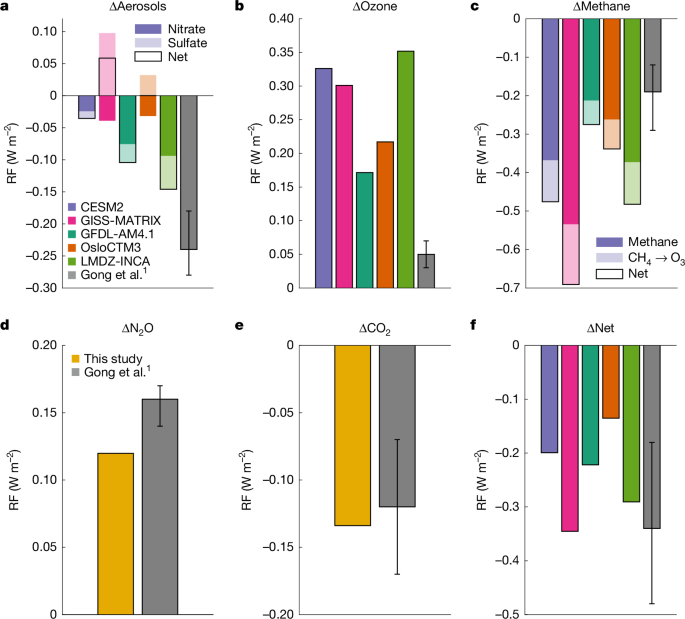
"The net climate effect of anthropogenic reactive nitrogen (Nr) is the sum of several terms that vary in sign and are associated with substantial uncertainties. Gong et al.1 reported a net negative direct radiative forcing (RF) of Nr in the year 2019 relative to the year 1850. We argue that their estimates and associated uncertainties of individual Nr climate effects, most notably aerosol, ozone and methane RF, do not reflect the current state of the art."
"Emissions of Nr lead to the formation of ammonium nitrate aerosols (NH 4+NO 3−; hereafter denoted nitrate), but their atmospheric abundance is highly uncertain. The Intergovernmental Panel on Climate Change Sixth Assessment Report (AR6) states that "there is high confidence that the NH 4+ and NO 3− burdens have increased from the pre-industrial period to the present day, although the magnitude of the increase is uncertain especially for NO 3−"2."
The net climate effect of anthropogenic reactive nitrogen (Nr) equals the sum of multiple terms with differing signs and large uncertainties. Individual Nr climate effects, especially aerosol, ozone and methane radiative forcings, can be outliers relative to multi-model ensembles and may have overly narrow reported uncertainty ranges. Emissions of Nr form ammonium nitrate aerosols, yet atmospheric nitrate burdens remain highly uncertain, with present-day global nitrate differing by up to a factor of 13 across models. Fine-mode nitrate aerosols primarily drive radiative forcing and are difficult to represent due to complex aerosol processes. Sulfate aerosols are also modulated by Nr through NOx-driven changes in oxidation pathways.
Read at Nature
Unable to calculate read time
Collection
[
|
...
]